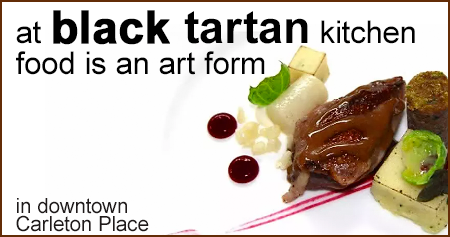Hummingbird Chocolate Makers
Date Published: Sat, 01 Dec 2012
Hummingbird Chocolate Makers
It’s holiday season once again and, love it or hate it, it can be a challenging time for many of us. Esteemed readers, if there is one bit of advice I might impart to you for taking the edge off the Christmas craze, it is this. Buy, eat, and share good chocolate.

It may indeed be that simple.
On this late November afternoon when, according to the media (even in Canada) I should be putting armour on and stampeding through the doors of some mall with battalions of other “smart shoppers” to save myself untold amounts on Black Friday deals, I have instead put on some music, stared out the window at the first fat flakes of snow, and nibbled on 50 grams of the best tasting bits of chocolate I have indulged in for a long time. This is far and away a better and cheaper option than “shopping therapy”.
Welcome to the tiny but burgeoning world that is the “bean-to-bar” chocolate makers’ sub-culture into which Hummingbird Chocolate (the object of my above-mentioned indulgences and the subject of this profile) has leapt. Since launching themselves this summer with three new 70% cacao, single origin chocolate bars, their Bolivia, Hispaniola and Peru bars have been receiving glowing accolades from chocolate aficionados.
“Single origin” chocolate uses beans from a single region — sometimes as regional as a single farm. By doing so, nuances of flavor intrinsic to the bean grown within a specific region are said to be unlocked. Learning how to do this is the key!
Erica and Drew Gilmour are the makers behind Hummingbird Chocolate. Noting the emergence of artisanal chocolate makers in North America several years ago, Erica started trying her hand at making chocolate by researching online how to start. And why not? Dark chocolate is high in antioxidants and has other reputed health benefits, not the least of which is that it injects a healthy dose of feel-good serotonin! This aside, Erica’s first endeavours were simply for fun and for the love of chocolate. However, when friends started asking for bars, she began exploring the potential for turning the hobby into a small-scale business. She started delving deeper by taking an online course through Ecole Chocolat that honed her tasting abilities and her knowledge of chocolate varieties. Simultaneously, Drew’s work–related visits to Haiti at the time introduced him to the production of cacao and to some of its producers. The stars began to align.
Fast forward to today. Following the success of their “test launch” this summer, and to keep pace with fast growing demand, they are moving into their new digs below Alice’s Village Café, the welcoming new food hub in downtown Carp. With some newly-arrived equipment and more space, they expect to be able to increase production from 800 to 5000 bars per month in the New Year.
Much like the way in which some wines highlight the characteristics of a specific grape grown in a specific location or “terroir”, Hummingbird chocolate bars each express the unique characteristics of the beans used in making them. It has taken much learning, experimentation, sensitivity and patience to develop the skills necessary for making their exceptional chocolate bars and to source a supply of the beans. Needless to say, they are passionate and dedicated to their mission!
The process of transforming cacao beans into chocolate bars is a lengthy one (a detailed description can be found on the Hummingbird website). To grossly simplify the process, chocolate makers take fermented raw cacao beans and turn them into chocolate “couverture” that can be used to make a final chocolate product. It takes Erica and Drew about a week to make a batch of solid chocolate couverture that is then aged for about a month to allow flavours to develop and mature. Tempering — the art of melting the chocolate to give it sheen and snap — prepares the chocolate for pouring into molds. These are the final stages before packaging.
Hummingbird chocolate bars are about as pure as they come with only three ingredients: 70% cacao (the baseline amount for dark chocolate), cane sugar and cocoa butter. What differentiates them from each other are the beans used. Specific varieties of top quality beans have been selected for their sought after flavours.
Having both grown up on farms, a focused interest in agriculture and farmer-centric community development appears to have guided Erica and Drew throughout their lives. Each of them has an impressive history of work in international development. They have worked independently in such places as Iraq, Zimbabwe, the Balkans, and for years in Afghanistan where they eventually met and wound up establishing their own development agency (Development Works, devworksco.com) — a social enterprise agency that builds rural opportunity in developing countries. With the birth of their daughter, Hannah (now 6), working in a less dangerous environment became a priority and they moved back to Canada (Stittsville to be precise).
This might all seem somehow incongruous to their new careers in the artisanal chocolate makers’ world, but not when you consider that the cacao beans they purchase are organic and fairly traded (meaning that producers get a better deal for their product and usually develop longer-term, more secure trading relationships). Erica and Drew are now beginning to take their principles a step further — the goal being to direct source their beans. This means that rather than purchasing through a broker, they hope to establish relationships directly with each of the producers of the beans they want to use. A direct relationship with the producer helps ensure even greater bean quality and specificity, and an adherence to standards such as organic practices and the preservation of biodiversity. Importantly, it also directs more money into the producer’s hands. Significant changes are beginning to occur as a result of this sort of arrangement. In some places the tide of migration from farm to city by younger generations has even begun to turn around as farming begins to be seen as a viable and valued occupation. In the end, the overarching principle is to contribute to the development of a sustainable farming future for rural families, while making an exceptional chocolate product available for public enjoyment.And they seem to be succeeding!
For those of you who might just be tempted to seek out some Hummingbird Chocolate as a holiday gift for friends, family or (ahem) as your own stocking stuffer, check out their website for retail listings and Christmas Market dates.
As an aside, a big heartfelt thanks to all the farmers and the land that has grown the food that we may be fortunate enough to enjoy this holiday season. Happy Holidays!
Get in touch
For full contact details, visit theHumm's Local Directory.
Apr 20 Perth Trashure Hunt Clean-up
Apr 20 Solitary Man
Apr 27 Festival of the Maples
Apr 27 The Moth Project
May 4 - 5 Spring Fine Art Show
May 5 Music at Mera: The Andrew Collins Trio
May 11 - 12 Art in the Attic
May 11 Engelbert Humperdinck & Tom Jones Tribute
May 16 MMLT Talk & AGM
- IS THIS A PROTEST?
- A Classic Whodunnit Agatha Christie’s Black Coffee at Studio Theatre
- Readers, Writers, and Poets
- Celebrate Indigenous Culture in CP
- Celebrate the ClassicsWith the Arnprior Choir
- 4F Auction Concoction Food, Fun, Fashion & Favourites
- Cheerfully Made Spring Market
- Electrify to Decarbonize Lanark
- Volunteer Forum
- Frankenstein Comes to The Station Theatre







